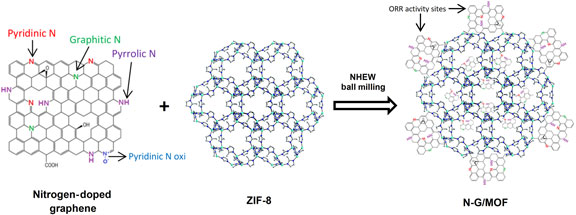No CrossRef data available.
Published online by Cambridge University Press: 20 December 2017

Nitrogen-doped graphene (N-G) is a promising non-platinum group metal catalyst for oxygen reduction reaction. A new N-G/metal organic framework (MOF) catalyst is derived by the modification of MOF on N-G catalysts to enhance the electrochemical performance of N-G by increasing the surface area and porosity in this paper. The characterization confirmed that the Brunauer–Emmett–Teller surface areas of N-G/MOF catalysts are 13–66 times larger than the original N-G catalyst. The highest current density (5.02 mA/cm2) and electron transfer number (3.93) of N-G/MOFs are higher than the N-G catalyst. The current density of N-G/MOF catalyst is even higher than 10 wt% Pt/C catalyst.